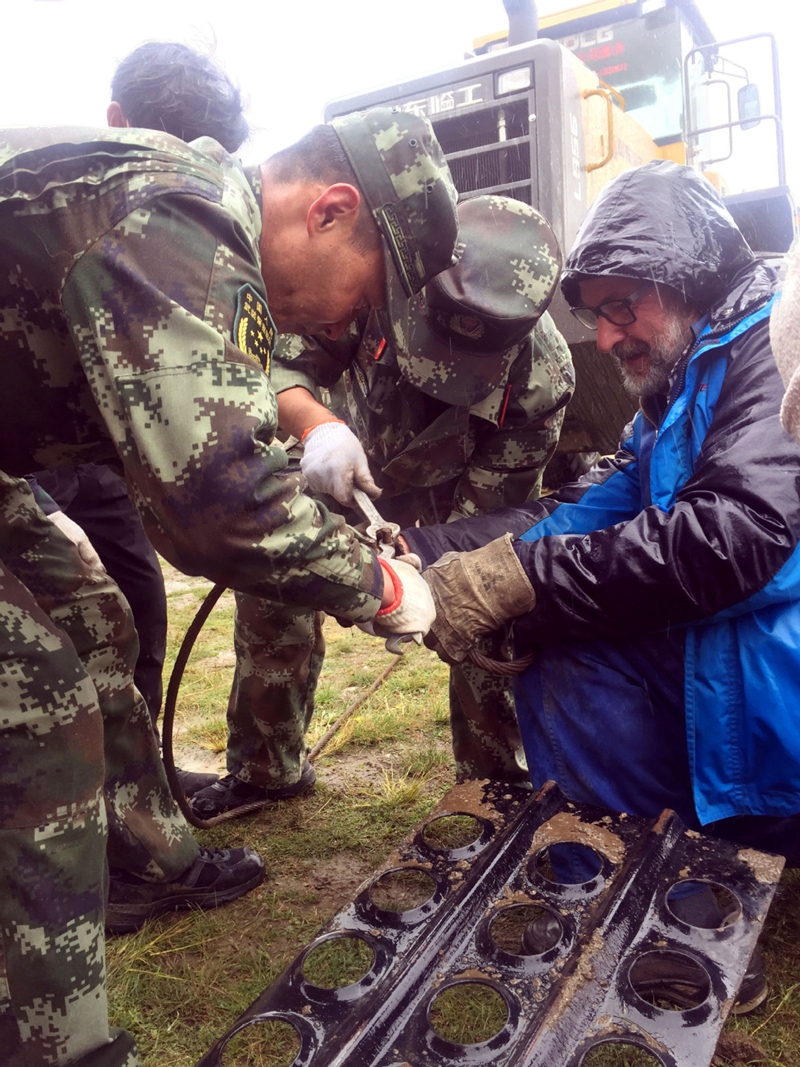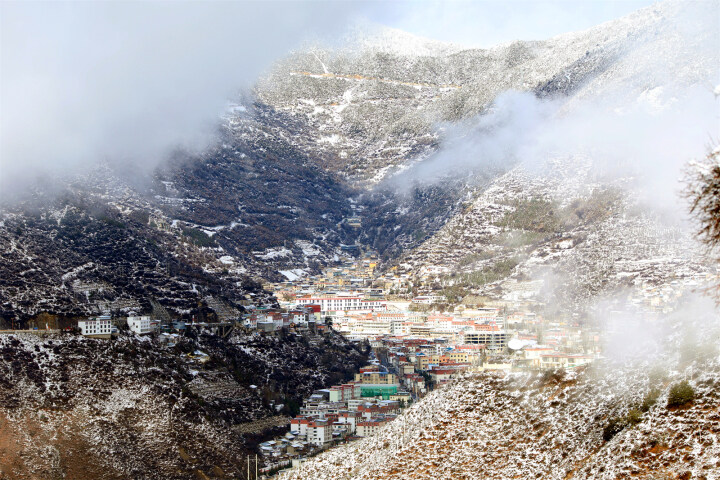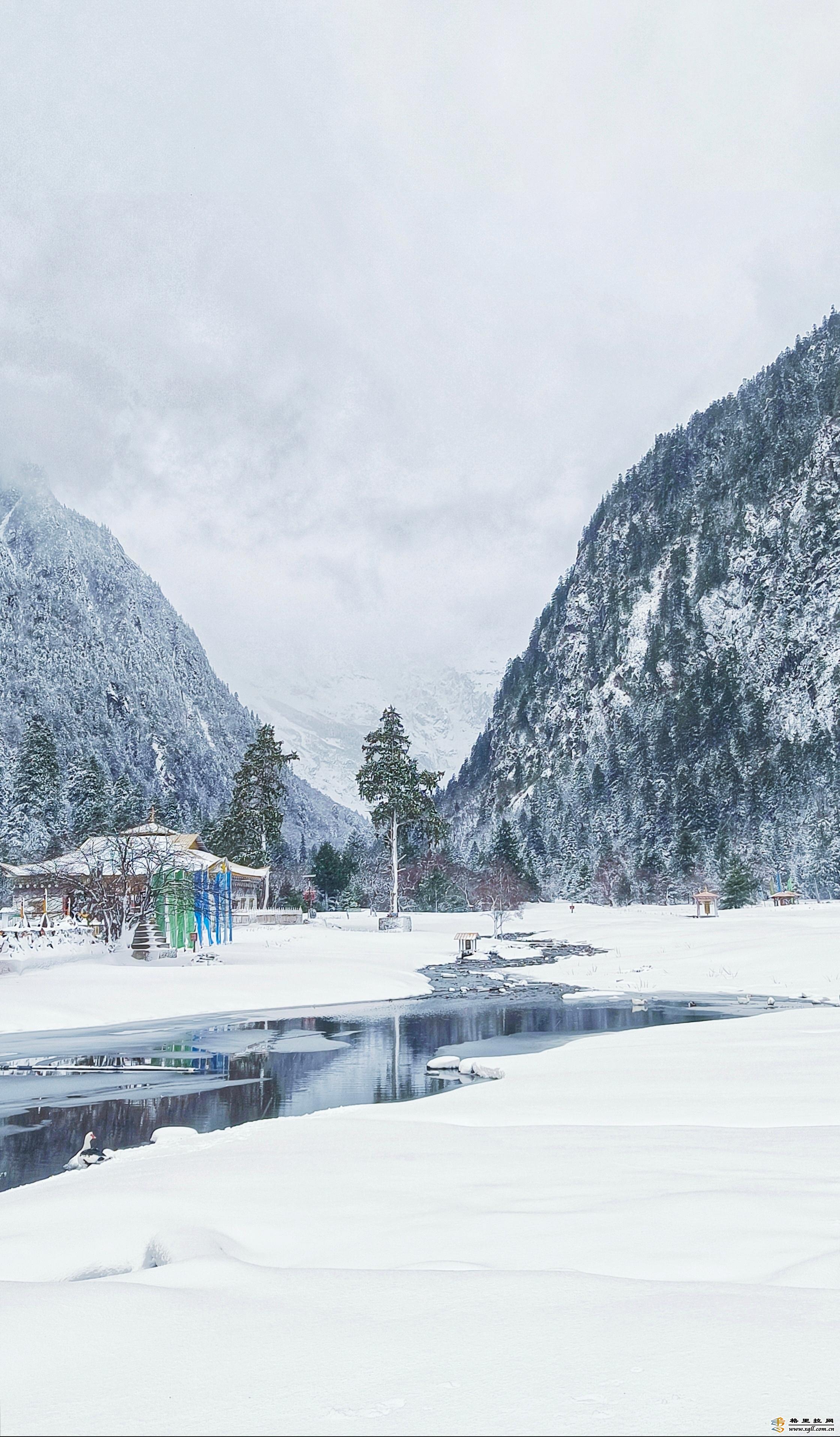
German tourists receive help as border officers fix wire cables to their caravan, which was stranded in marshland in 2017. Provided To China Daily
Force of nature
Speed is everything when an emergency arises at 5,000-plus meters. The ruthless force of nature manifests itself through murderous winds, biting cold and a lack of oxygen that derails judgment.
However, that does little to deter waves of Chinese and foreign visitors from embarking on a journey that lasts at least 24 hours. At least 40,000 such visitors arrive every year.
One glance at Mount Kailash explains their infatuation. The mountain looms as a pyramid-shaped summit of gleaming snow interspersed with striated, ink-black rock. Its majesty commands attention even among Tibet's many peaks.
Religious significance adds to the appeal. Four religions - Hinduism, Buddhism, Jainism and Tibetan Bon - regard the mountain as the axis of their spiritual world.
It is said that circling the holy mountain once during the Year of the Horse in the 12-year cycle is equivalent to completing 12 circuits. In 2014 - the most recent Year of the Horse in the Tibetan calendar - upwards of 10,000 travelers arrived at the mountain's foothills, according to Fang.
The influx of travelers and pilgrims to the small, isolated town of Darchen stands in stark contrast to the sparsely spread patchwork of law enforcement authorities in the vast Burang county, which administers Darchen.
"Darchen is 140 kilometers from Burang and 270 km from the major government bodies of Ngari prefecture," said Namgyal Trinley, police instructor at the station.
"It takes at least an hour for officers in Burang to reach the foot of Mount Kailash, and nearly three hours for the nearest special police and armed forces to arrive."
That leaves the police station, nestled at the entrance to the pilgrimage path, as the single force that can provide rapid assistance in the event of an emergency on higher ground.
"One time, when we came to the rescue of a groggy man stranded halfway up, his first words were to ask why the police were so slow and why we hadn't dispatched a helicopter to transfer him downhill," said Yang Hui, who joined the station in 2017.
Dangers
Some amateur trekkers simply underestimate the great difficulty and inherent risk of the trek, and of rescue missions, he added.
Mountain roads are exhausting for trekkers and dangerous for wheeled vehicles. Karma Jinpa, one of two drivers at the police station, has striven to sharpen his skills, striking a balance between safety and speed.
"I used to have clammy hands while driving the 6-km-long road into the mountain. The bumpy ride sometimes made my colleagues nauseous, but they never blamed me," said the ethnic Tibetan from Nagchu city, about 1,500 km away.
Though he is now familiar with the road, it takes at least an hour to complete the trip. "The snowfall is intimidating. I always feel anxious when driving in heavy snow, especially at the sharp turn near the Drirapuk Monastery," he said.
Even during favorable weather in late summer, vehicles are subject to unexpected risks.
In August 2017, a caravan transporting 20 German backpackers became stuck in a swamp near the Prayer Square, a major tourist attraction at 4,800 meters.
"We started by shoveling mud and silt, filling in boulders, and clipping wire cables onto the van," said Fang, who was leading a patrol that came across the group.
"The vehicle was huge and wouldn't budge. So we arranged for a tow truck from a village about 12 km away to come. Eventually, the caravan was pulled out of the swamp."
|






7740f3b5-9ecb-438e-9052-76cb2d4bb671.jpg)

